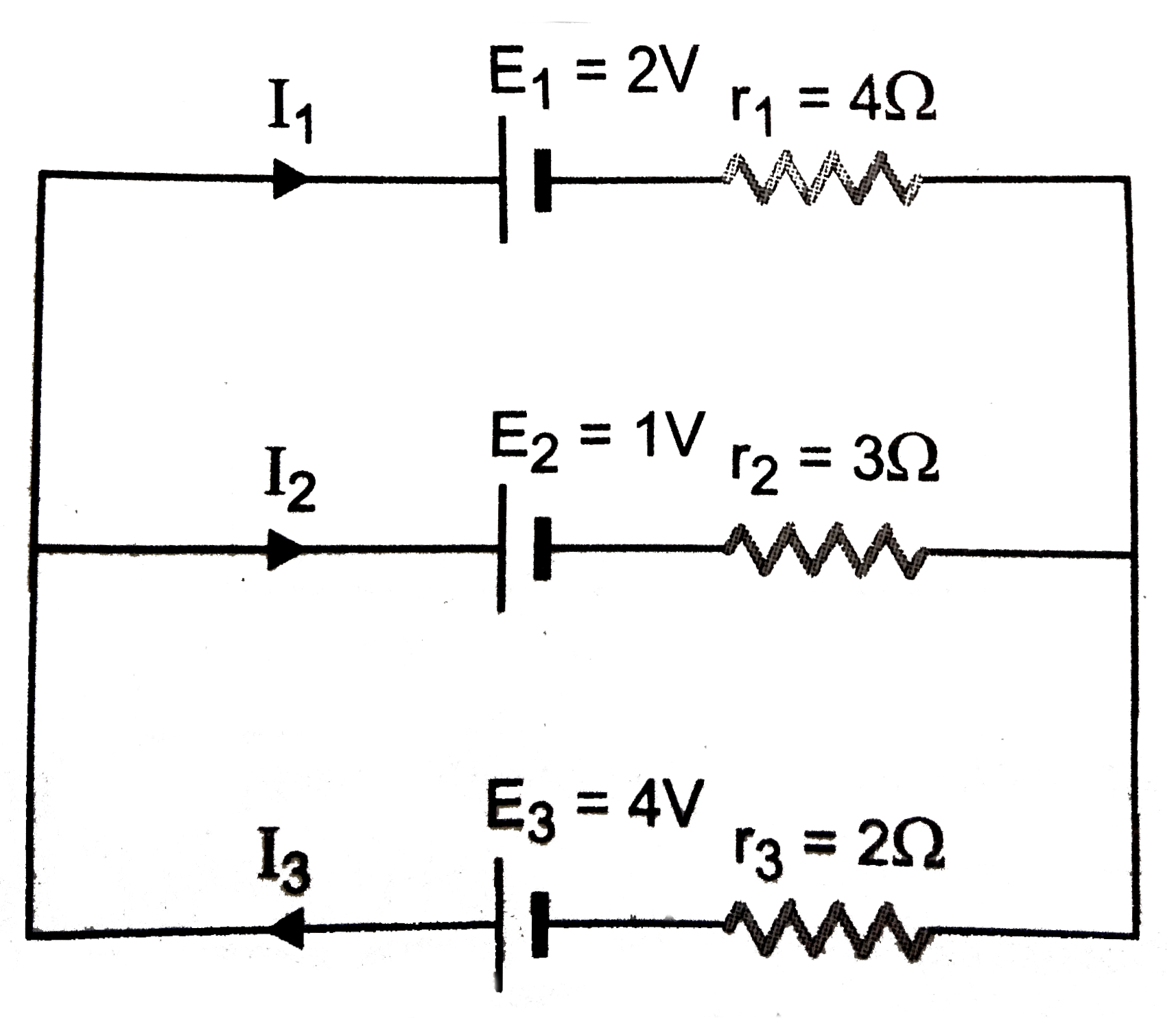State Kirchhoff's rules. Use these rules to write the expressions for the currents I1,I2 and I3 in the circuit diagram shown in Fig.
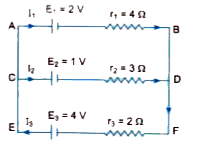
Text Solution
In the network given here as per Kirchhoff.s first law, we have
I3=I1+I2 ....(i)
In loop ECDEF, we have
−1−3I2−2I3+4=0
⇒2I3+3I2=3 ...(ii)
Again in loop EABFE, we have
−2−4I1−2I3+4=0
⇒2I3+4I1=2 ...(iii)
On solving these equations, we get I1=213A,I2=713A and I3=913A
|
Topper's Solved these Questions
- CURRENT ELECTRICITY BOOK - U-LIKE SERIESCHAPTER - CURRENT ELECTRICITY EXERCISE - LONG ANSWER QUESTIONS - II
8 Videos
- CURRENT ELECTRICITY BOOK - U-LIKE SERIESCHAPTER - CURRENT ELECTRICITY EXERCISE - SELF ASSESSMENT TEST (SECTION A (MULTIPLE CHOICE QUESTIONS))
6 Videos
- CURRENT ELECTRICITY BOOK - U-LIKE SERIESCHAPTER - CURRENT ELECTRICITY EXERCISE - SHORT ANSWER QUESTIONS
42 Videos
- CBSE SAMPLE QUESTION PAPER 2019-20 (SOLVED)BOOK - U-LIKE SERIESCHAPTER - CBSE SAMPLE QUESTION PAPER 2019-20 (SOLVED)EXERCISE - SECTION D
6 Videos
- DUAL NATURE OF RADIATION AND MATTERBOOK - U-LIKE SERIESCHAPTER - DUAL NATURE OF RADIATION AND MATTEREXERCISE - SELF ASSESSMENT TEST SECTION-C (VERY SHORT ANSWER QUESTIONS)
3 Videos
Similar Questions
Knowledge Check
Find the current I1, I2, & I3, in the circuit.
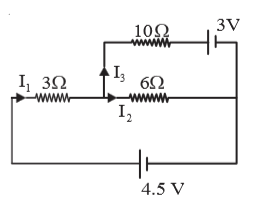 A12,12,1B1,1,2C12,12,3D12,12,0
A12,12,1B1,1,2C12,12,3D12,12,0The current I in the circuit shown is
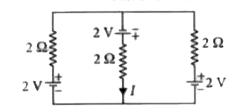 A1.33ABzeroC2.00AD1.00A
A1.33ABzeroC2.00AD1.00A
Find the current I1, I2, & I3, in the circuit.

View SolutionState Kirchhoff's rules. Apply these rules to the loops PRSP and PRQP to write the expressions for the currents I1,I2 and I3 in the given circuit of Fig.
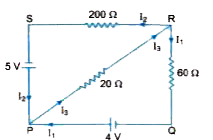
View SolutionApply kirchhoff's rules to the length PRSP and PRQP to wire the expression for the current I1,I2andI3 in the circuit
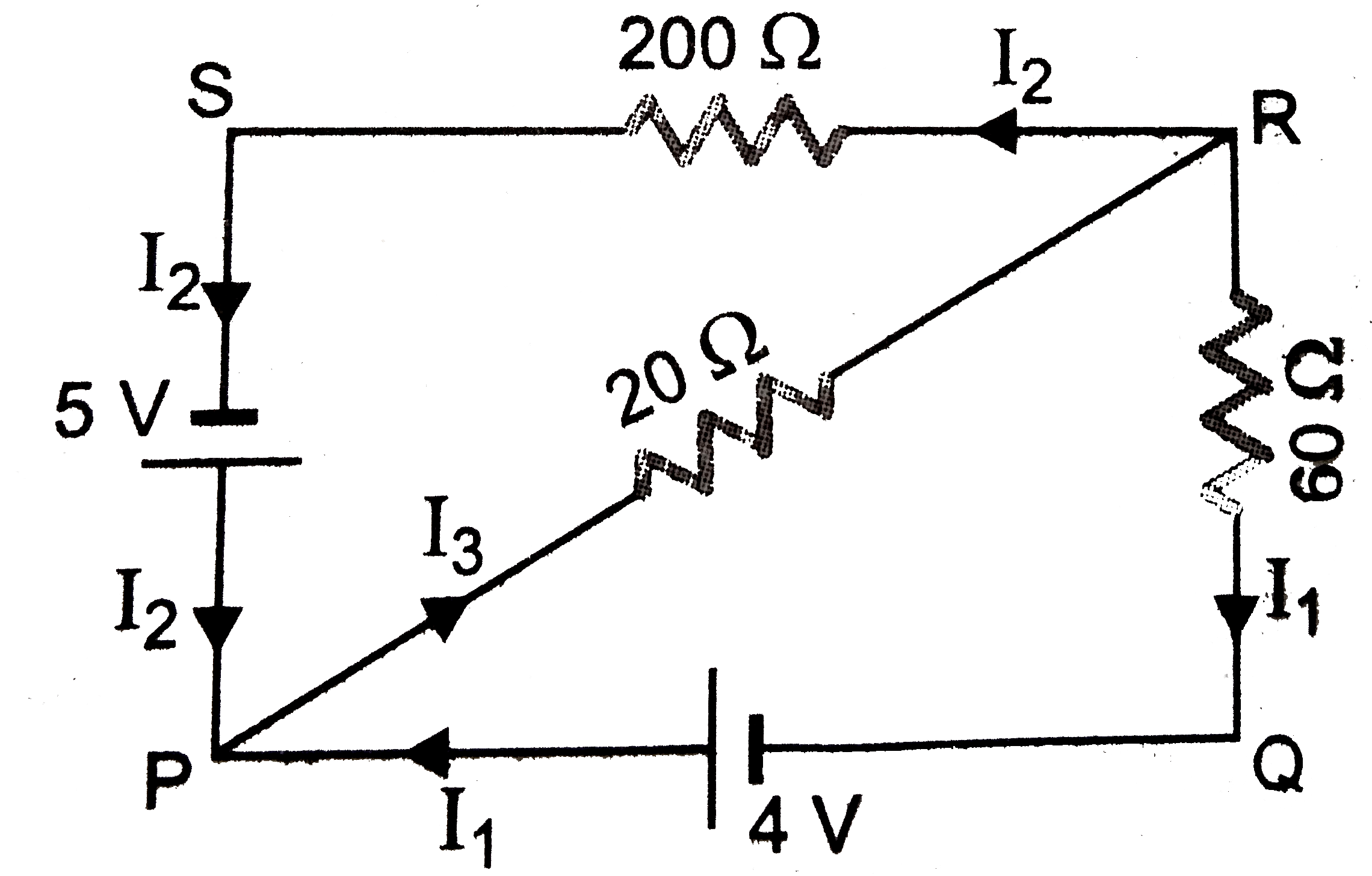
View SolutionState Kirchhoff's rules . Apply Kirchhoff's rules to the loops ACBPA and ACBQA to write the expressions for the currents I1,I2 and I3 in the network .
View SolutionThe current .i. in the circuit as shown in fig. is
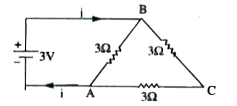
View SolutionUsing Kirchhoff's rules, calculate the potential difference between B and D in the circuit diagram as shown in Fig.
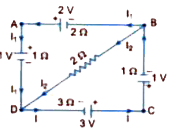
View Solution

